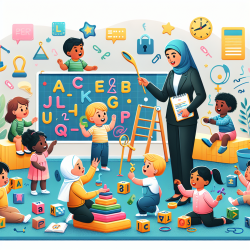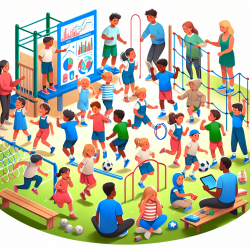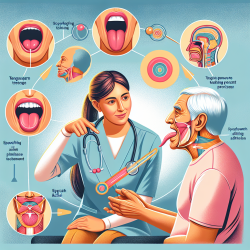Introduction
In the field of speech-language pathology, the development of reliable assessment tools is crucial for the accurate diagnosis and intervention of language disorders. The recent study titled "Development & Validation of Urdu Receptive Language Scale (URLS)" offers a significant advancement in the assessment of receptive language skills among Urdu-speaking children aged 0-6 years. This blog explores the implications of this study for practitioners and encourages further research and application of the URLS in diverse educational settings.
Understanding the Urdu Receptive Language Scale (URLS)
The URLS was developed to address the lack of standardized tools for assessing receptive language skills in Urdu-speaking children. The scale comprises 59 items, each tailored to specific age groups, ensuring that the assessment is age-appropriate and comprehensive. The study reports high reliability and validity, with a Cronbach’s alpha of 0.948, indicating strong internal consistency.
Application in Practice
For speech-language pathologists (SLPs) and educators, the URLS provides a robust framework for evaluating the receptive language abilities of young children. By implementing this scale, practitioners can:
- Identify language delays and disorders early, allowing for timely intervention.
- Tailor educational and therapeutic strategies to meet the specific needs of each child.
- Enhance communication with parents by providing clear, evidence-based assessments of their child’s language development.
Moreover, the URLS can serve as a foundation for further research into language acquisition and the development of additional assessment tools for other languages and dialects.
Encouraging Further Research
The development of the URLS is a significant step forward, but it also highlights the need for continued research in several areas:
- Expanding the Sample: Future studies should include a more diverse sample, encompassing rural areas and various dialects, to enhance the generalizability of the findings.
- Longitudinal Studies: Tracking language development over time can provide deeper insights into the effectiveness of interventions based on URLS assessments.
- Cross-Linguistic Comparisons: Comparing the URLS with similar tools in other languages can help refine assessment techniques and improve cross-cultural understanding of language development.
Conclusion
The Urdu Receptive Language Scale is a valuable tool for practitioners working with Urdu-speaking children. Its implementation can lead to improved outcomes in language development and early intervention. As the only standardized tool available for this population, the URLS represents a critical advancement in the field of speech-language pathology.
To read the original research paper, please follow this link: Development & Validation of Urdu Receptive Language Scale (URLS).










